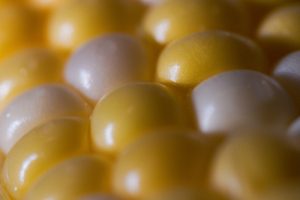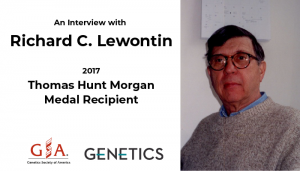Enter your address to receive notifications about new posts to your email.
Featured
-
Featured
Enriching the science training experience requires empathy and compassion
Guest post by Faten Taki. Leaving work late the other night, I crossed paths with a tearful postdoc colleague. The encounter left a scar in me. I was tired after what was for me a long day. But for her, it was after yet another mandatory four-hour meeting that ended at 10 pm. As she…
-
Featured
Mariana Wolfner recognized with 2018 Genetics Society of America Medal
The Genetics Society of America (GSA) is pleased to announce that Professor Mariana Wolfner of the Department of Molecular Biology and Genetics at Cornell University is the recipient of the 2018 Genetics Society of America Medal for her work on reproduction. Wolfner and her colleagues have identified proteins in the seminal fluid of fruit flies…
-
Featured
To fight malnutrition, geneticists are developing more nutritious corn
Corn feeds millions of people, and its low cost makes it particularly important in developing countries. However, it can’t be relied on as the sole source of protein for either humans or livestock because—like most cereals—corn is low in certain essential amino acids. In the 1960s, a type of corn was discovered with boosted levels of…
-
Featured
Is a statistical test letting significance slip through the cracks?
Every scientist is familiar with the p-value: it’s one of the most commonly used metrics in statistics to evaluate the likeliness that an observed relationship is due to chance. Typically, a cutoff is set at p=0.05, such that any p-value of greater than 0.05 means the result is deemed “not statistically significant”—a heartbreaking outcome for…
-
Featured
Zebrafish offer hope for understanding severe form of epilepsy
The prolonged and severe seizures suffered by those with pyridoxine-dependent epilepsy (PDE) can lead to brain dysfunction and death if not treated. Standard antiepileptic drugs are typically ineffective for people with this rare genetic disorder—instead, they need high doses of vitamin B6 in the form of pyridoxine or pyridoxal 5′-phosphate. But even with this supplementation,…
-
Featured
Brooke LaFlamme, Chief Editor of Communications Biology, wants you to know that editors are not the enemy
Brooke LaFlamme found her career in scientific publishing through informational interviews. She recommends trainees interested in science communication fields start writing early and often. In the Decoding Life series, we talk to geneticists with diverse career paths, tracing the many directions possible after research training. This series is brought to you by the GSA Early…
-
Featured
Beyond the #GradTax: more tax proposals that threaten the scientific community
Guest post by the GSA Early Career Scientist Policy Subcommittee Scientific progress is at risk from proposed changes to the US tax code. These changes, proposed by both the House and Senate, threaten to constrict the supply of research labor and funding, the impact of which will be felt for generations. The scientific community has…
-
Featured
Circulomes vary based on cell type
In the 1980s, scientists first noticed circles of DNA interspersed among the normally linear chromosomes of eukaryotic nuclei. Little is known about these molecules, which are called extrachromosomal circular DNA (eccDNA). Variation in eccDNA appears to be biologically significant; development of an organism often comes with increased numbers of eccDNA, for example, and certain types…
-
Featured
Grad students save lives
On a spring day in 2006, I woke up from surgery to learn that I had an aggressive type of breast cancer that would require chemotherapy. I had been told I had a relatively benign diagnosis that was supposed to be cured by a mastectomy. It was devastating to realize that the surgery was not…
-
Featured
Random Factors: An Interview with 2017 Thomas Hunt Morgan Medal Recipient Richard C. Lewontin
The Thomas Hunt Morgan Medal is awarded to an individual member of the Genetics Society of America for lifetime achievement in the field of genetics. It recognizes the full body of work of an exceptional geneticist. The 2017 recipient is Richard C. Lewontin, whose contributions and influence have profoundly shaped the field of evolutionary genetics.…
-
Featured
Treasure Your Exceptions: An Interview with 2017 George Beadle Award Recipient Susan A. Gerbi
The Genetics Society of America’s George W. Beadle Award honors individuals who have made outstanding contributions to the community of genetics researchers and who exemplify the qualities of its namesake. The 2017 recipient is Susan A. Gerbi, who has been a prominent leader and advocate for the scientific community. In the course of her research…











